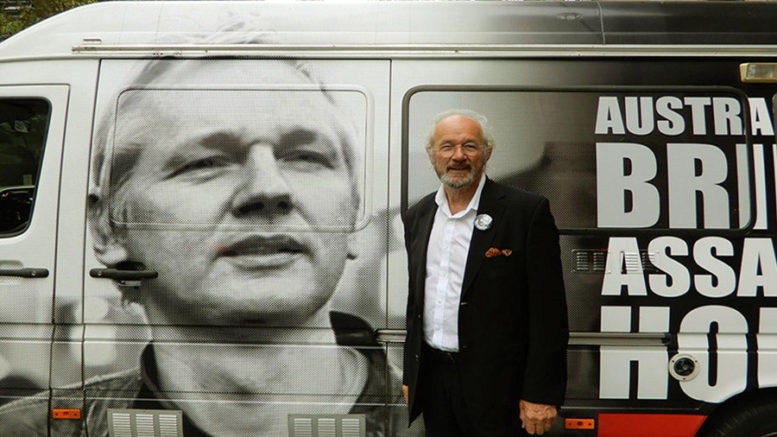Contributed by Joe Montero
The Home Run for Julian tour is coming towards an end. Since 26 February, the team of supporters led by Assange’s father John Shipton, has made its way through Victoria, New South Wales, and headed for a rally in Canberra on the 15 March.
Along the way, rallies have been addressed in towns and cities. The call to bring Julian Assange home has been spread.
Speaking in Canberra: John Shipton, Caroline Le Couture, Bernard Colleary & David McBride.
Video from Home Run for Julian tour
Shipton has been constantly campaigning for his son’s release from Belmarsh prison since he was taken into UK custody in April 2019. Her is certain the level of public support is on the rise, and points to the existence of the Bring Julian Assange Home Parliamentary Group, as a clear sign of this.
Assange has 38 million followers on Facebook and 6 million on Twitter. Sn impressive list of high-profile figures have come out to bat for Julian. The Council of Europe has passed a motion of support for him. Myths created to blacken his name, like he is a serial attacker of women, in league with terrorists, and a puppet of the Russians, no longer have credibility.
Despite the progress, a decade of imprisonment, first stuck in the Ecuadoran embassy, and then locked up in Britain’s notorious high security Hindmarsh prison, have taken a toll on Assange’s health.
Despite this, he continues to fight on.
Speaking in Sydney
Video from Home Run for Julian tour
The saga begun in February 2010, when WikiLeaks began releasing a voluminous trove of classified documents that exposed United States war crimes. Her and WikiLeaks were accused of endangering the lives of American operatives.
The reality is that it was not he or WikiLeaks that released the names. This happened by the hand of guardian journalist Davide Leigh. Days later, the German weakly did the same, and was followed by the New York Times, el Pais, Der Spiegel, and Le Mond.
Julian Assange tried to stop this, and even went as far as to alert the Obama administration. He was accused and the media outlets responsible left alone.
It was at this point that the name calling began. Assange was said to have “blood on his hands”.
A decade later, the extradition hearing to have him sent from Britain to the United States began and ended on a technicality. Although the court ruled out the extradition on health grounds, everyone knew that the decision was really political. The case based on the American Espionage Act of 1917 and computer hacking, had become politically awkward.
A means to at least buy time was needed. The court still accepted the prosecution’s position and left it open to resume the extradition case. Proof of this is that Julian Assange is still in Belmarsh.
The battle to have him freed and returned home to Australia is still on.


Be the first to comment on "Tour in Support of Assange calls for his return"